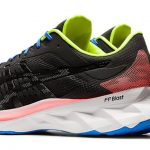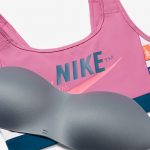When Eliud Kipchoge broke the two hour marathon barrier in October 2019, his record-breaking Nike Alphafly prototype became the subject of speculation, with many runners questioning what the new rules mean for the brand.
Following the new regulations set by World Athletics, the governing body gave the seal of approval to the hugely controversial Nike Vaporfly. The new regulations impose an immediate ban on any shoe with a sole thicker than 40mm or shoes that contains more than one plate.
In the wake of all the controversy over Nike Vaporfly and Alphafly, carbon fibre plates are now all the rage in sports footwear. New materials have produced demonstrably faster running shoes with bouncy foams and propulsion plates. Every brand is now adapting to the rise of running shoes with carbon plates.
What really is a carbon plate?
Carbon fibre is a material consisting of very thin filaments of carbon atoms. It is high in stiffness, tensile strength, and five-times stronger but lighter than steel, making it the ideal manufacturing materials for many parts.
Due to its high chemical resistance and temperature tolerance to excessive heat, carbon fibre is widely used in military, medical, automotive, and recreational applications, such as the wing of the aircraft, the body of the F1 car, the body of the high-end bicycle, and the prosthesis used by the disabled.
Therefore, a carbon fibre plate acts like a spring, embedded in the midsole foam of a running shoe, which provides an especially responsive feel.
What differences can a carbon fibre plate make to a running shoe?
A stiff and light carbon fibre plate helps the foam compress and expand more quickly, returning the energy to the runner.
Carbon fibre plate also helps stabilise the runner’s ankle, reducing rotational force and lessening the workload for the calves, theoretically helping runners stay fresher for longer through the race and recover more quickly afterwards.
The plate keeps the toes straight, further reducing energy loss.
Is this the trend moving forward?
Despite the postponement of the Tokyo 2020 Olympics, ASICS recently released Olympic-themed technology and style. ASICS announced the debut of the MetaRacer running shoe that combines Guidesole curved midsole technology to ease stress on the ankle joint with a carbon fibre plate, the first use of a carbon plate for ASICS.
Previously, Nike unveiled the commercial version of Kipchoge’s shoe, the Air Zoom Alphafly NEXT%, Adidas, New Balance, Brooks, and Saucony followed suit with carbon-equipped footwear of their own.
With that said, we are now entering the new era of running shoes.
Here are the running shoes with carbon fibre plates you need to know.
Nike Air Zoom Alphafly Next%

The Nike Air Zoom Alphafly Next% is designed with a thick foam sole made with revolutionary Pebax materials, paired with a carbon plate that adds great cushioning and springiness to each step. And new to the Alphafly are the two Zoom Air Pods in the forefoot, which add even more energy return.
adidas Adizero Pro

For the first time ever, adidas’ Lightstrike midsole technology, one of the lightest TPU foams on the market is used on a running shoe. It is combined with Boost at the heel. Single-layer Celarmesh, adidas’ thinnest mesh ever locks down the foot for a fast feeling. A Carbitex carbon plate is sandwiched between the midsole and the sock liner. The adidas Adizero Pro has become adidas’ most advanced and fastest ever distance running shoe.
UA HOVR Machina

UA HOVR™ Machina is more than a running shoe. Not only it gives you soft energy return and the speed of a Pebax propulsion plate, but it also coaches you. By tracking your stride length, cadence, and more it gives you real-time, personalised tips to help make running feel easier. The 2-pronged carbon-filled Pebax spring plate helps runners get up on their toes to keep their turnover quick and their transition snappy.
ASICS MetaRacer

The MetaRacer is ASICS’ most advanced distance racing shoe, with energy-saving GUIDESOLE technology combined with a stabilising carbon plate. The shoe has an improved toe-spring shape that reduces the load on the calf muscle by up to 20 per cent for better energy efficiency. It also features a lightweight but supportive engineered mesh upper that keeps feet cool in hot and humid weather.
HOKA One One Carbon X

The Hoka One One Carbon X features a specially engineered carbon plate and an aggressive Meta-Rocker, designed to provide an efficient and propulsive ride. Hoka One One’s PROFLY X technology, a special combination of foams, employed with its trademark geometry, delivers an inherently stable, soft and responsive experience. Completed with a lightweight upper scrutinised through the lens of speed, the Carbon X is designed to empower runners.
Brooks Hyperion Elite

The Hyperion Elite delivers Brooks’ fastest ride to runners who are serious about speed. Brooks’ new and super light DNA ZERO midsole adapts to your stride to provide consistent cushion without adding build, while the carbon fibre propulsion plate with a unique spine construction speeds your transition from heel to forefoot in every step and propels your toe-off.
New Balance FuelCell TC

The New Balance FuelCell TC is a training and racing shoe, with impressive durability to provide longevity for longer runs. The FuelCell midsole is designed to deliver high rebound, and complemented by an internal, full-length carbon plate which provides a more propulsive an engaging ride. It has the same compounds that were used with the FuelCell 5280.
Saucony Endorphin Pro

With ultralight, springy PWRRUN PB cushioning and Saucony’s signature S-curve carbon plate, the Saucony Endorphin Pro makes running at top speed feel easier. It is constructed with its SPEEDROLL technology to propel you forward with the feeling of continuous momentum, so you can run faster.
Will the running shoes with carbon plates become the must-have shoes for world athletes and runners?




